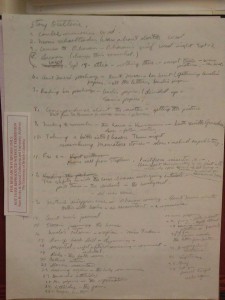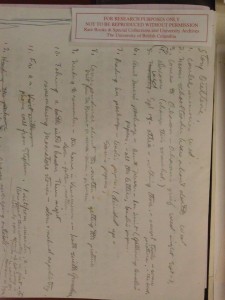Hello readers!
This week in my ASTU class, we have been analyzing Mohsin Hamid’s The Reluctant Fundamentalist. It provides a fictional account of twenty-two year old narrator, Changez’s, experience as a Pakistani in New York City before and after the traumatic events of 9/11. Changez attends Princeton University, obtains a job at the prestigious valuation firm Underwood Sampson & Company, and falls in love with an American girl named Erica all before returning home to Pakistan. Throughout the novel, Changez struggles to find his identity — is he Pakistani or American? What does it mean to be one or the other? This point is especially prevalent in the structure of the novel itself.
The novel takes the form of a dramatic monologue. In other words, the story is told through a one-sided conversation between Changez and an American in a Lahore café in Pakistan. Literary scholar Peter Morey discusses the novel’s form in his essay, arguing that this particular structure allows Changez’s character to exemplify the contrast between our pre-conceived assumptions and perceptions as readers — with regards to “war on terror” discourse — and reality (139). Morey focuses on this “deterritorialization” and destabilization of both the reader and Changez throughout his essay (138). That is to say, The Reluctant Fundamentalist challenges the assumptions of “war on terror” rhetoric, opening up the space for new interpretations to take place (Morey 138). This point is exemplified by the title of the novel itself. As readers, we would assume that Changez would be a “religious fundamentalist”, confirming our pre-conceived ideas about Muslims in a post-9/11 era. However, as Morey points out, this is not the case (139). Religion, in fact, is not the main focus of the novel. Once this point is identified, we — as readers — can choose to see Changez’s character in a new way. Changez no longer adheres to the stereotypes that plague society’s discourse; we are therefore “destabilized”.
With regards to the dramatic monologue as the form of the novel, it makes Changez appear to be a relatable character, giving him a sense of authority to tell the story. However, the one-sided nature of the dramatic monologue also means that Changez’s narration could be unreliable. In other words, it is unclear as to whether or not Changez is making up his story or telling the truth. Are the characters he describes real? Are they allegorical? What happens at the end of the novel? Many questions are left unanswered.
After our discussions in class, I realized that Hamid may have chosen the dramatic monologue for the very purpose of not answering these questions. In other words, there is not supposed to be a “right” answer; that is not the point. Changez’s character and the form of the novel are meant to destabilize our assumptions. How we interpret the potential answers to these questions shows the extent to which we opened ourselves up to new perspectives, if we chose to do so at all. I found this to be an effective method and found The Reluctant Fundamentalist to be much more impactful as a result.
This is my last blog post, readers! It has been quite the year; thank you for participating. I hope you enjoyed our journey together as much as I did!
All the best,
Taylor K.
Work Cited
Morey, Peter. “The Rules of the Game have Changed:” Mohsin Hamid’s The Reluctant Fundamentalist and Post-9/11 Fiction.” Journal of Postcolonial Writing 47. 2 (2011): 135-146. Web. Taylor & Francis. 18 Dec. 2015.


